

The overall aim of money laundering is the same—to turn illicit funds into seemingly legitimate currency. That being said, there are many different reasons criminals launder money, and many different ways of doing it. With so many methods at fraudsters' disposal, it’s challenging to identify all instances of money laundering and adequately prevent it.
Having learned what money laundering is, let’s explore the different types of money laundering methods that launderers use to hide their criminal proceeds.
As noted, criminals use a variety of methods to launder money, especially with the availability of a wide range of financial products, providers, and technology. It’s essential to understand the threats you face, and how to combat each type of money laundering.
Below are 10 common types of money laundering practices to watch out for.

Structuring, also referred to as smurfing, is the process of moving a large amount of illicit proceeds by dividing it into smaller transactions to conceal the source of these proceeds. These transactions are often spread out over different accounts to ensure they are not detected.
For example, if a criminal wants to send $50,000 abroad, they’ll break it up into 10 transactions of $5,000 each to avoid it being reported by the regulatory authorities. In some cases, they’ll even spread these out across multiple accounts to further obfuscate the true source. This could be through a group of accomplices, commonly known as ‘money mules.’
Smurfing can be traced if monitored closely. Several small transactions being made at the same time and from the same source account, transactions with values just below the regulatory threshold, or several small deposits being made to international accounts are some of the red flags to help identify this.
While monitoring transactions, paying attention to the transaction values and source accounts is essential, even if the value is below regulatory standards. Customizable, rule-based transaction monitoring allows you to set thresholds to watch for, allowing you to catch fraudsters skirting these minimum thresholds for AML compliance.
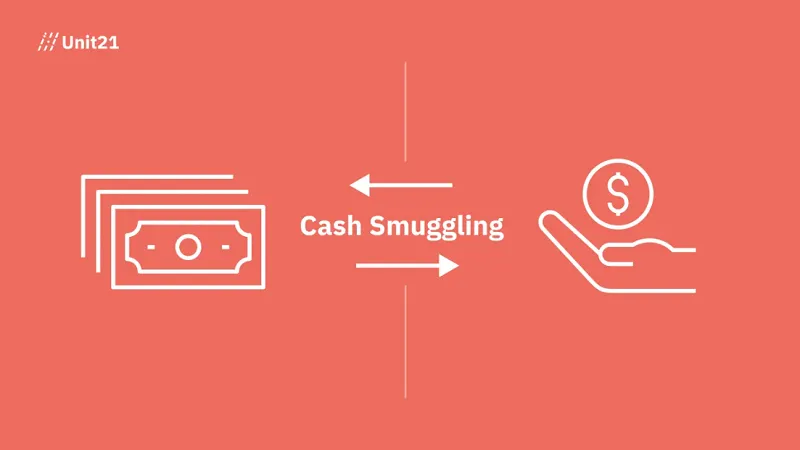
Cash transportation or courier is a popular way terrorists move funds while avoiding conventional banking systems and the AML/CFT measures established by regulators. It is one of the oldest forms of laundering money. This involves physically transporting the cash from one jurisdiction to another and depositing it in a bank or financial institution.
Cash has the advantage of being less traceable, and is, therefore, a weapon of choice for most launderers. As per the Asia Pacific Group Annual Typologies report from 2003-2004, The Bali bombings in 2002 were funded by Al-Qaeda ($30,000) using cash couriers. As legitimate financial institutions have tightened their due diligence process, moving money using cash couriers has become an attractive method to launder money.
Setting a limit to the amount of cash one can courier, tightening national customs regulations, and establishing stricter restrictions on how much money a person can carry with them while traveling is a way to combat this issue.
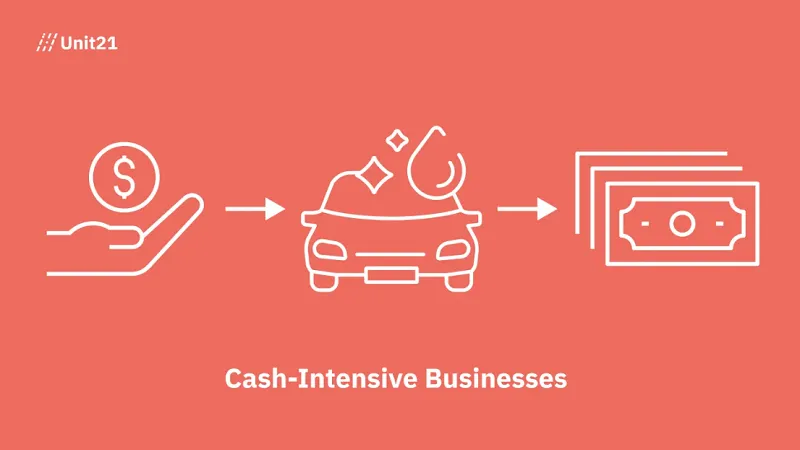
Certain businesses—by nature of the industry they’re in—are cash intensive. Since cash transactions don’t leave a trace of where the money is coming from, these businesses allow fraudsters the opportunity to launder funds more easily.
Such businesses have been the target of launderers as it is easy to claim such cash received as revenue. Examples of such businesses would be restaurants, grocery stores, car washes, precious metals or stones, bars, convenience stores, tanning salons, parking lots, or liquor stores.
The best way to tackle this is by establishing procedures and policies while onboarding customers. A risk management framework can help assess the risk profile of certain businesses based on their activities and customers. Higher-risk businesses should be monitored regularly for suspicious activity such as deposits of large sums of money, geographic locations where they operate, business activity, products or services offered, the kind of customers they have, the frequency of transactions, and their consistency.
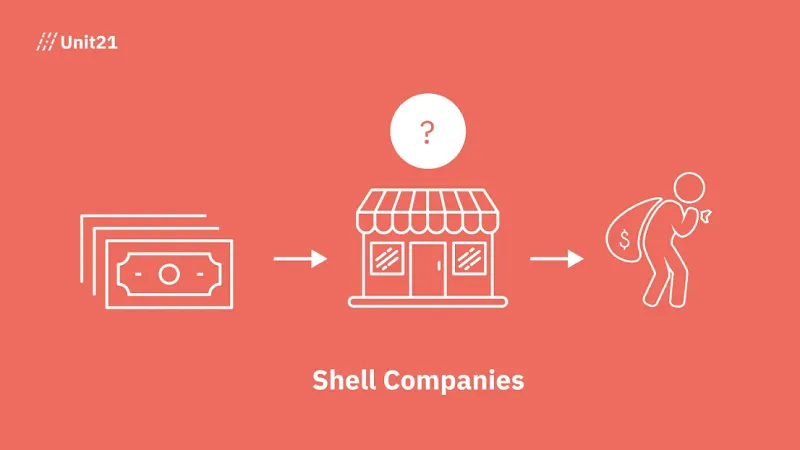
A shell company is a business or organization that only exists on paper, has no physical location or staff, but may have a bank account, passive investments, or be the legally recognized owner of property. Shell companies are usually used for tax evasion, tax avoidance, and money laundering.
The Panama Papers scandal exposed the number of shell companies that had been incorporated in jurisdictions like the Cayman Islands, Wyoming, Nevada, and other jurisdictions. The regulatory restrictions in these regions were much more relaxed compared to other places, making them ideal places for criminals to launder money or avoid taxes. These places are often referred to as tax havens, as the nature of their tax systems encourages criminals to exploit the financial system's relaxed stance on money laundering.
This type of money laundering has been prevalent in the past few years, with regulators worldwide now introducing ultimate beneficial ownership (UBO) authentication. An ultimate beneficial owner is defined as the natural person(s) who owns or has control over a business, as well as the natural person(s) acting on their behalf in a transaction. It also involves individuals with the ultimate word in a legal entity or organization.
Identifying a UBO of a company has become an important part of a company’s KYC and due diligence process. Once a company is onboarded, it is imperative to conduct ongoing monitoring to ensure no transactions are made to risky jurisdictions or large unexplainable transfers. Non-compliance with disclosing the beneficiary structure can result in severe reputational and financial damage to the organization or person concerned.
Legislations such as the Dodd-Frank Act, EU’s 6AMLD, FinCEN final rule, and FATCA have emphasized the importance of authenticating UBO as a part of a successful compliance program.

Trade-based money laundering (TBML) is the process of conducting international trade transactions to conceal the proceeds of crime and move cash to cover up its illegal sources. TBML involves misusing different kinds of offshore trade processes and the import and export of goods in question. Usually, these methods involve misappropriation of invoices, quality of the products, and shipment quantities.
Businesses must work to improve their AML/KYC procedures in trade finance and correspondent banking to fight trade-based money laundering. Unfortunately, due to the nature of those industries, many businesses find it difficult to change or adapt their AML processes successfully.
The difficulty in identifying trade-based money laundering is increased by the fact that it frequently blends in with legal trade activity and is spread over several jurisdictions and organizations. The more effectively individual businesses can work to prevent it, the more extensive the regulatory approach on TBML should be.
Some of the red flags to look for in such situations are:
- Inconsistency with trading activity and their stated line of business, for example, a textile business trading cars
- Newly formed incorporations that make high-value transactions
- Falsified invoices and trade documents
- Deals involving several external or third party entities
- Making purchases beyond the company’s financial worth
- Trading in high-risk countries with minimum due diligence processes
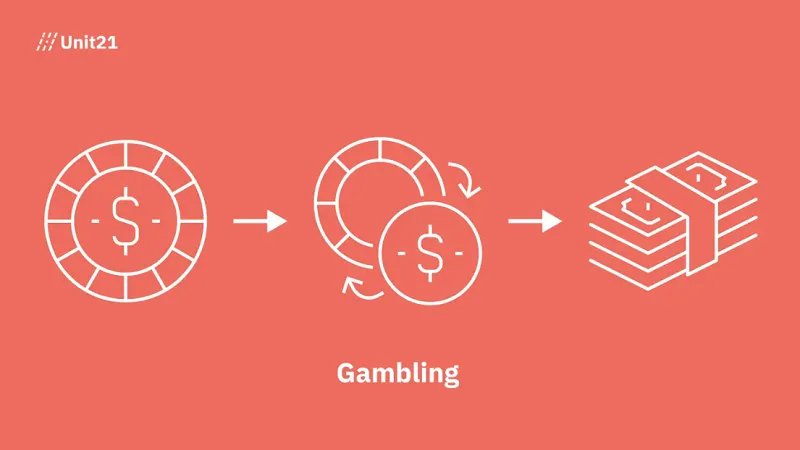
Criminals have been using online and offline gambling as a method to launder money for a long time now. Casinos are often categorized as a high-risk industry in financial institutions because of how convenient it is for criminals to launder illicit proceeds and place it into the legitimate financial system. Due to the enormous quantities of money that pass through internet casinos every day, there has also been a substantial increase in the amount of money that is being routed via these establishments.
One of the most common ways launderers use this method is by depositing a huge amount into a betting account and then making a series of dummy bets in different accounts to eventually cash out all that money. This has become an increasingly common practice with many unlicensed websites launched daily with little to no KYC restrictions.
The online gambling market will be worth more than $92.3 billion by next year, making it even more difficult for authorities to eradicate money laundering. Casino owners, both online and offline, must ensure customer verification through strict KYC and due diligence procedures and policies set within their organizations.

Gamers were estimated to spend $180 billion on games in 2020, making the gaming industry a very lucrative industry. When purchasing a game in an online video game, the player must enter their credit card details into the system. Through these accounts, criminals can steal this information to carry out illegal activities, exploiting virtual currency in online games to move illicit funds.
Making several little transactions is another technique that fraudsters frequently use. Games allow for in-game purchases for typically small amounts of money, also referred to as ‘microtransactions.’ Criminals convert their illicit proceeds to in-game currency, by making changes to the game character or purchases on the gaming portal only to later sell it for in-game virtual currency, through small transactions.
Even though each transaction is small, the total revenue is ridiculously high. Games like Fortnite saw sales of over $1 billion in microtransactions. Given how knowledgeable and skilled criminals are nowadays, it is undoubtedly challenging to counter such efforts at money laundering, but focusing on and following such patterns would be the most effective strategy to eliminate this problem.
Regulating the gaming and gambling industry would reduce the likelihood of money laundering. In lieu of these changes, organizations themselves can mitigate risk by developing risk profiles for customers, examining transactions (and other user activity), and fostering a risk-based approach to money laundering. Following a risk-based approach also helps build a strong compliance framework within the organization, cutting down on suspicious activity.

In simple terms, transaction laundering is the action where one merchant processes payment card transactions on behalf of another merchant. In a transaction laundering scheme, two websites would be used. The first website deals with illegal products such as counterfeit goods, drugs, weapons, and forged documents, while a second merchant account (that appears to be running a legitimate business) completes the sale instead of the original seller's merchant account. The second eCommerce website functions mostly as a gateway to a merchant account and services for credit card processing and exists only on the internet.
As it relates to a good or service, such as the sale of a book or payment for online poker, the charge on the buyer's credit card appears legitimate. Whereas, in actuality, the sale of an illicit good or service is involved in the transaction. This is also known as ‘factoring’ and is a type of credit card money laundering.
The complexity of transaction laundering and the different people associated with it can make it very difficult to detect, especially because it is now so easy for anyone to create a website. The growing use of credit cards, small businesses, and technological advancement is a convenient pathway for criminals to commit this crime.
Transaction laundering can be conducted in many other ways, such as using someone else’s card credentials to conduct illicit operations, teaming up with illegal merchants for a fee in exchange for letting them use your website or platform, or creating a fake website just to harvest someone’s credit card details.
Transaction laundering comes under the purview of financial crimes as per the FinCEN in the U.S., and the greatest challenge they have faced is not being able to establish a framework to impose stricter regulations on card transactions because of how untraceable such crimes can be. In the 4th AML Directive, the European Union imposed a rule to monitor transactions and business relationships. Regulators find detecting transaction laundering difficult because they appear to be lawful activities and transactions.
Apart from monitoring transactions and beneficial owners, it would be worth investigating suspicious-looking websites and their payment chains to compare the payments and volume of business conducted.

In this scenario, criminals or money launderers purchase a majority stake in a bank and then move illicit funds using the bank without any scrutiny. This is more commonly done in countries with inadequate anti-money laundering regulations and laws. Legitimate organizations that partner with these institutions could face serious financial risk as a result and may be held accountable.
This money laundering method is common in risky jurisdictions with a history of money laundering and tax havens. Conducting enhanced due diligence on customers who have links to risky jurisdictions or in countries with a poor regulatory system is an important component of minimizing risks of money laundering or financial crime.
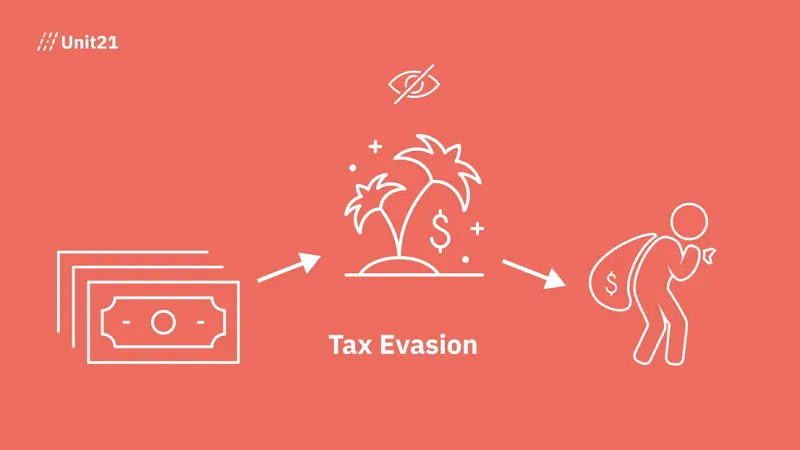
Tax evasion is a type of money laundering where the criminal uses havens or different methods to try and evade payment. This violates the law. People who are found engaging in tax evasion often face criminal charges. Ever since the financial crisis in 2007, several reported cases of tax evasion have been reported.
A country is considered a ‘tax haven’ if it uses taxes of foreigners or foreign businesses to its advantage in order to reduce its own tax burden. The Cayman Islands, Panama, Barbados, and the Bahamas are some examples of commonly used tax havens. The Panama Papers exposed 214,000 tax havens involving wealthy people, public officials, and entities from 200 nations. Harald Joachim von der Goltz was one such individual. Being a US resident, he set up several shell corporations worldwide and hid his beneficial ownership to evade taxes. He was arrested for fraud following the reveal.
How can we monitor such individuals? Tax receipts and activities are often used as evidence to track an individual’s financial history and source of income. The best way to identify red flags is by conducting a risk assessment to classify those who conduct business activities and transactions in risky jurisdictions, based on their profiles. Unverified source of funds, unsubstantiated business activities, and very little or vague information regarding beneficial owners are some of the red flags to look out for.
Procedures should be established within the organization to report any suspicions of tax evasion by encouraging and training employees. This will also help the company to cultivate a culture of compliance while staying compliant with regulatory obligations.
As online financial services continue to grow in popularity, they disrupt traditional banking norms. To adapt to these changes, new financial instruments are being introduced by governments around the world regularly.
As these services grow, criminals will find new ways of exploiting these services. As Fintechs like Neobanks are new, fraudsters will look to exploit them before they can develop robust compliance measures to prevent money laundering.
As a result, becoming familiar with AML procedures is essential. Strengthening anti-money laundering controls within the institution by investing in compliance resources and good tools such as RegTech software for transaction monitoring, KYC and Sanctions, or PEP screening is a great step towards eliminating money laundering risks.
Combating the 10 Types of Money Laundering
By understanding the primary types of money laundering, how fraudsters are getting away with each, and how you can combat each type, your organization is better equipped to prevent fraud from occurring within your platform.
Though there are many types of money laundering, each type also occurs within three stages. To get into more detail, next up is our chapter on The 3 Stages of Money Laundering: Placement, Layering, & Integration. If you want to go back to the start of this guide with the basics, jump back to the beginning of our guide to Anti-Money Laundering Compliance.
Subscribe to our Blog!
Please fill out the form below:



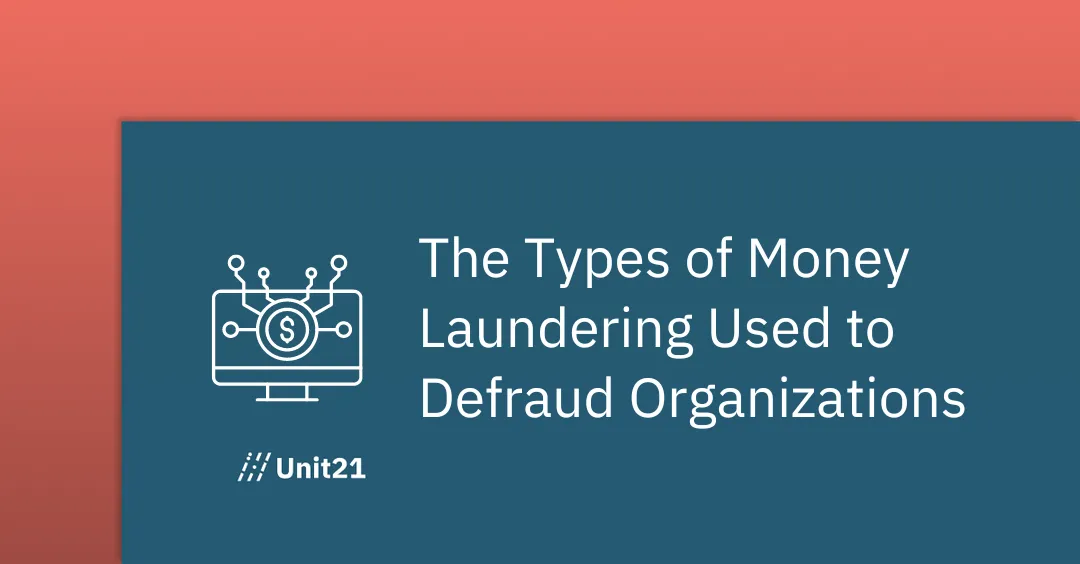


.webp)
.webp)
.webp)